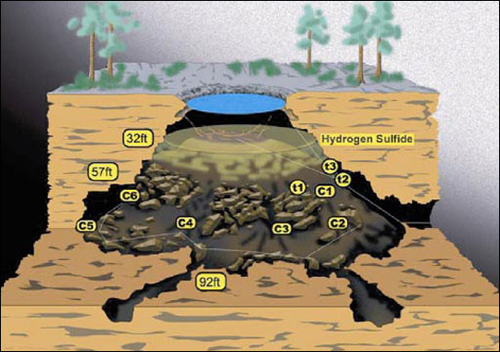|
From:TheBahamasWeekly.com Abaco
Like a time machine, the fossils reveal in stages what ecosystems were like on the island of Abaco from periods between 12,000 to 1,000 years ago. "Their ultra-high quality of preservation puts the fossils in a category all their own," David Steadman, who led the project and is curator of ornithology at the Florida Museum of Natural History , told Discovery News. "The potential for future analysis involves physical as well as chemical analysis," he added before explaining that stable isotopes, or atomic particles, can show what certain species ate, allowing scientists to reconstruct entire ecosystems. The "blue hole," called Sawmill Sink, is a water-filled void in limestone bedrock that's open at the surface. The water, depleted of oxygen, necessitated special diving equipment and methods. The divers wore "mixed gas rebreathers," closed-circuit devices that don't release exhaled air bubbles. This prevents bubbles from disturbing the site's unique water chemistry, while keeping the bubbles from whipping up clouds of bacterial mats, which could obscure visibility. The fossils included two extinct species of tortoise. One specimen had three sets of healed bite marks from a Cuban crocodile that's now locally extinct in the Bahamas. A particularly large group of fossils came from a part of the site known as "the owl roost." "Owls cough up bony pellets and are extremely efficient accumulators of small vertebrates," Steadman explained. Although no ancient owl was found at the roost, this part of the site yielded one species of lizard, three types of snakes, 25 species of birds and four bat species. Among the birds, one was a never before described extinct flightless rail. Four other locally extinct birds -- the Cooper's Gundlach 's hawk, the flicker, the cave swallow, and an eastern meadowlark -- were also recovered from the roost." Read the entire article HERE - click to 2 pages
|
